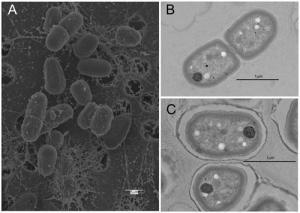Scientists find unusual new species in Kilauea caldera
University of Hawaiʻi at MānoaScientists at the University of Hawai‘i at Mānoa have formally described an unusual new species found so far in only one cave in Kilauea Caldera on Hawaii Island.
“We cultivated a new cyanobacterium from an almost 100-year-old lava cave in volcanically active Kilauea Caldera," said Associate Professor Stuart Donachie in the Department of Microbiology at the College of Natural Sciences. "This species has not been found anywhere else in the world."
"We sequenced its genome and confirmed that it is only the second-known species in the Gloeobacter genus, the first species of which was described almost 40 years ago," Donachie continued. "It’s a great find because both species represent an entire taxonomic order distinct from the other 7,500 known cyanobacteria species. They lack the photosynthetic membranes that are found in all those 7,500 species, which means they are also the most primitive known cyanobacteria.”
The researchers reported their finding in an October 23, 2013 article in the scientific journal PLOS ONE, "Cultivation and complete genome sequencing of Gloeobacter kilaueensis sp. nov., from a lava cave in Kīlauea Caldera, Hawai'i."
Donachie teaches and conducts research in marine microbiology and other aspects of environmental microbiology. The research team included Jimmy Saw, who conducted the work as part of his PhD research, plus collaborators from Hawai‘i and across the United States.
PLOS ONE: http://dx.plos.org/10.1371/journal.pone.0076376
For more information, visit: http://www.hawaii.edu/natsci/


